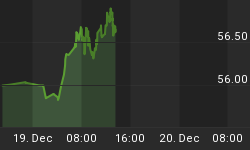Bitcoin had held onto the high 411,000 price range for weeks in a show of stability that it hasn’t really before. Then it hit $12,000, and to many it seemed like that volatility had taken a bit of a break. Until it didn’t.
Last week, amid a stock market rout that saw the tech giants shed some major rallying points, bitcoin got dumped, too, losing nearly $2,000.
At the time of writing, the world’s most valuable crypto was even lower, at $9,896--its lowest since late July.
$10,000 is lately considered the “psychological” level for bitcoin, so when it dips below that, it sparks a very polarized debate as to whether this is the time to buy or whether extreme volatility is going to send it back down to $6,000--or worse.
It’s the eternally existential question for crypto, which is almost entirely psychological and barely tangible.
But this time around, there are a few things that are different.
For one, about a month ago, George Ball, CEO of Sanders Morris Harris investment firm, came out and designated Labor Day--today--as a milestone for crypto. According to Ball, who also happens to be the former CEO of Prudential Securities, today could be the official start of bitcoin’s ascendance into the mainstream.
So far this year, bitcoin has gained on COVID-19, benefitting from government stimulus measures, not to mention a lot of money-printing. So, with the market now seeing a return flight to safety to the US dollar since the end of last week, one of those bitcoin boosters has been temporarily reversed.
This year has also been the first to really allow us to establish a correlation between Bitcoin and the equities market, and the rout since last Thursday has affected both.
Swan Bitcoin app chief executive Cory Klippsten told Forbes last week that while bitcoin price movements have been highly correlated to U.S. stocks this year, over the short-term, over the longer term, “bitcoin has proven to be uncorrelated.
"Bitcoin has proven to be uncorrelated over the longer term. At a minimum it is a hedge against fiat inflation, but it also functions as a call option on a new global monetary system,” Klippsten said, noting that there is likely to be some hungry buying of bitcoin if it dips below $10,000, which it has as of the time of writing.
So how much buying on the dip is going on so far? It’s hard to tell, but CoinDesk, using Glassnode data, notes that the number of “accumulation addresses” has increased by 2% in the past three weeks as bitcoin went from $12,400 to under $10,000.
Figuring out any correlations between bitcoin and the US dollar, bitcoin and the equities market or bitcoin and gold has largely been a fool’s errand over the long term.
Peter Schiff, a long-time gold bug who doesn’t care much for bitcoin, always thought that if gold rose to new highs, bitcoin would collapse. But that didn’t happen last month when gold was climbing and bitcoin was climbing right along with it.
On the other side of this divide we have the Winklevoss twins, who have been in an ongoing Twitter showdown with Schiff, with the former predicting that $10,000 is the new $1,000 for bitcoin. In other words, $10,000 is the baseline for any new dips in the cryptocurrency. Schiff, even though he’s seen that bitcoin didn’t follow gold in the other direction in August, still thinks this is just bitcoin consolidating before a crash.
By Michael Kern for Safehaven.com
More Top Reads From Safehaven.com:
















